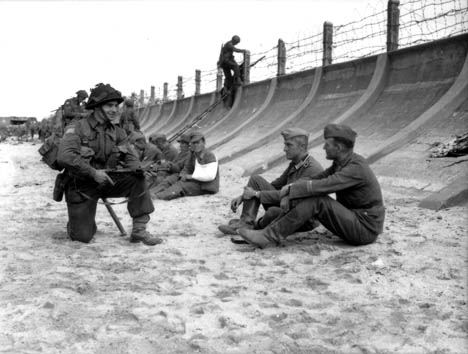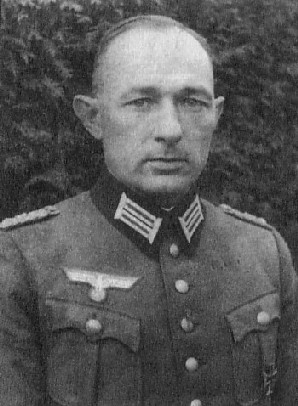German 716th Infantry Division on:
[Wikipedia]
[Google]
[Amazon]
The 716th Static Infantry Division (German: ''716. Infanterie-Division'') was a
 The 716th's complement when raised in 1941 was:
* Divisional Staff
* 726 Infantry Regiment
* 736 Infantry Regiment
* 716 Artillery Regiment
* 716 ''
The 716th's complement when raised in 1941 was:
* Divisional Staff
* 726 Infantry Regiment
* 736 Infantry Regiment
* 716 Artillery Regiment
* 716 '' The 716th's complement during the June 1944 Normandy Campaign consisted of:
* Command
* 726th Grenadier Regiment (439th
The 716th's complement during the June 1944 Normandy Campaign consisted of:
* Command
* 726th Grenadier Regiment (439th
German Order of Battle in Normandy
. Retrieved July 25, 2008 {{DEFAULTSORT:716th Static Infantry Division (Wehrmacht) German units in Normandy Military units and formations established in 1941 Military units and formations disestablished in 1945 Infantry divisions of Germany during World War II
World War II
World War II or the Second World War, often abbreviated as WWII or WW2, was a world war that lasted from 1939 to 1945. It involved the vast majority of the world's countries—including all of the great powers—forming two opposin ...
, German Army
The German Army (, "army") is the land component of the armed forces of Germany. The present-day German Army was founded in 1955 as part of the newly formed West German ''Bundeswehr'' together with the ''Marine'' (German Navy) and the ''Luftwaf ...
infantry division. It was raised on May 2, 1941, and sent to German-occupied France
The Military Administration in France (german: Militärverwaltung in Frankreich; french: Occupation de la France par l'Allemagne) was an interim occupation authority established by Nazi Germany during World War II to administer the occupied zo ...
in June 1941. Many of the division's troops were elderly Germans and conscripts from other German-occupied countries, especially Ukrainians
Ukrainians ( uk, Українці, Ukraintsi, ) are an East Slavs, East Slavic ethnic group native to Ukraine. They are the seventh-largest nation in Europe. The native language of the Ukrainians is Ukrainian language, Ukrainian. The majority ...
. The division also had some young German conscripts as well. As a ''bodenständig'' (static unit) it was not equipped with the standard configuration of vehicles and heavy weapons. Much of the division's artillery and anti-tank guns were from captured armaments.
It is well-known for its involvement as a defensive unit in the Allied Normandy landings
The Normandy landings were the landing operations and associated airborne operations on Tuesday, 6 June 1944 of the Allied invasion of Normandy in Operation Overlord during World War II. Codenamed Operation Neptune and often referred to as ...
on 6 June 1944 (often called "D-Day").
Divisional history
The 716.Infanterie-Divisionen was mobilized for occupation duties in the 15.Welle (Wave) Replacement Army on 2 May 1941 inWehrkreis VI
The military districts, also known in some English-language publications by their German name as Wehrkreise (singular: ''Wehrkreis''), were administrative territorial units in Nazi Germany before and during World War II. The task of military distr ...
in Munster. After formation in Bielefeld, and transfer to Occupied France, it was assigned to AOK 15 in June 1941 and employed at Saint-Lo and Soissons. It was transferred to the 7th Army in June 1942 and relocated to Normandy
Normandy (; french: link=no, Normandie ; nrf, Normaundie, Nouormandie ; from Old French , plural of ''Normant'', originally from the word for "northman" in several Scandinavian languages) is a geographical and cultural region in Northwestern ...
, with duties including coastal defence, air raid protection and defensive fortification construction. After short movements to Amiens
Amiens (English: or ; ; pcd, Anmien, or ) is a city and commune in northern France, located north of Paris and south-west of Lille. It is the capital of the Somme department in the region of Hauts-de-France. In 2021, the population of ...
and Brussels
Brussels (french: Bruxelles or ; nl, Brussel ), officially the Brussels-Capital Region (All text and all but one graphic show the English name as Brussels-Capital Region.) (french: link=no, Région de Bruxelles-Capitale; nl, link=no, Bruss ...
it returned to the divisions in Normandy. The 716th Division had no combat experience, and was one of the weakest divisions in the area.
On D-Day
The Normandy landings were the landing operations and associated airborne operations on Tuesday, 6 June 1944 of the Allied invasion of Normandy in Operation Overlord during World War II. Codenamed Operation Neptune and often referred to as D ...
, The division was responsible for Küsten Verteidigung Abschnitt - Divisional Coastal Defensive Section: 7 KVA ‘H1’ - KVA Caen. Having the task of defeating landings it manned an extended line of defensible posts, along its assigned 47 km of Normandy Coast, and deployed all other unit resources then available above the Basse Normandie: Calvados-Baie de Seine Coastal Plain. Fighting with additionally allocated LXXXIV Korps resources, the tactical situation and the terrain saw the Division 'split' across two Regimental Coastal Defensive Sections: Küsten Verteidigungs Gruppe Courseulles and Küsten Verteidigungs Gruppe Riva-Bella. To the west, K.V.-Gruppe Courseulles commanded all Divisional troops from Asnelles to Saint-Aubin-sur-Mer, seeing it attempt to defeat landings at Gold Beach
Gold, commonly known as Gold Beach, was the code name for one of the five areas of the Allied invasion of German-occupied France in the Normandy landings on 6 June 1944, during the Second World War. Gold, the central of the five areas, was lo ...
and Juno Beach
Juno or Juno Beach was one of five beaches of the Allied invasion of German-occupied France in the Normandy landings on 6 June 1944 during the Second World War. The beach spanned from Courseulles, a village just east of the British beach Gold ...
. In the east up to the AOK 7 / AOK 15 Boundary, K.V.-Gruppe Riva-Bella commanded the tactical situation from Langrune-sur-Mer to Le Home Varaville, becoming responsible to defeat landings at Sword Beach and by the British 6th Airborne Division
The 6th Airborne Division was an airborne infantry division of the British Army during the Second World War. Despite its name, the 6th was actually the second of two airborne divisions raised by the British Army during the war, the other being t ...
; astride the River Orne.
During the fighting after D-Day, the division fought defensively around Caen and Villers-Bocage. According to the commanding officer, ''Generalleutnant'' Wilhelm Richter, ''"My division had been defeated and badly beaten up in Normandy"''. The division was removed from frontline duty on July 10, 1944, and was able to avoid the carnage of the Falaise Pocket. Redeployed to southern France
Southern France, also known as the South of France or colloquially in French language, French as , is a defined geographical area consisting of the regions of France that border the Atlantic Ocean south of the Marais Poitevin,Louis Papy, ''Le midi ...
, the division took up coastal security positions in the region of Salses-Perpignan-Elne, close to the Spanish border. Thereafter, the division was ordered to withdraw on August 19, 1944, and retreated through Languedoc
The Province of Languedoc (; , ; oc, Lengadòc ) is a former province of France.
Most of its territory is now contained in the modern-day region of Occitanie in Southern France. Its capital city was Toulouse. It had an area of approximately ...
to the region around Lyon
Lyon,, ; Occitan: ''Lion'', hist. ''Lionés'' also spelled in English as Lyons, is the third-largest city and second-largest metropolitan area of France. It is located at the confluence of the rivers Rhône and Saône, to the northwest of t ...
. After this movement the division was engaged by the French resistance
The French Resistance (french: La Résistance) was a collection of organisations that fought the German occupation of France during World War II, Nazi occupation of France and the Collaborationism, collaborationist Vichy France, Vichy régim ...
before later arriving in the area of Sélestat
Sélestat (; Alsatian: ''Schlettstàdt''; German: ''Schlettstadt'') is a commune in the Grand Est region of France. An administrative division (Subprefectures in France, sous-préfecture) of the Bas-Rhin Departments of France, department, the tow ...
in Alsace
Alsace (, ; ; Low Alemannic German/ gsw-FR, Elsàss ; german: Elsass ; la, Alsatia) is a cultural region and a territorial collectivity in eastern France, on the west bank of the upper Rhine next to Germany and Switzerland. In 2020, it had ...
.
In October 1944, the 716th Infantry Division was in the region of Oberrhein
The Upper Rhine (german: Oberrhein ; french: Rhin Supérieur) is the section of the Rhine between Basel in Switzerland and Bingen am Rhein, Bingen in Germany, surrounded by the Upper Rhine Plain. The river is marked by Rhine-kilometres 17 ...
(near Colmar
Colmar (, ; Alsatian: ' ; German during 1871–1918 and 1940–1945: ') is a city and commune in the Haut-Rhin department and Grand Est region of north-eastern France. The third-largest commune in Alsace (after Strasbourg and Mulhouse), it is ...
) where it fought at Neunkirch-Obenhein and was nearly wiped out in heavy fighting in January 1945. The remains of the division was reconstituted as the 716th Volksgrenadier Division in April 1945 before surrendering to American troops at Kempten in May 1945.
Order of battle
 The 716th's complement when raised in 1941 was:
* Divisional Staff
* 726 Infantry Regiment
* 736 Infantry Regiment
* 716 Artillery Regiment
* 716 ''
The 716th's complement when raised in 1941 was:
* Divisional Staff
* 726 Infantry Regiment
* 736 Infantry Regiment
* 716 Artillery Regiment
* 716 ''Panzerjäger
''Panzerjäger'' (German language, German "armour-hunters" or "tank-hunters", abbreviated to ''Pz.Jg.'' in German) was a branch of service of the Nazi Germany, German Wehrmacht during the World War II, Second World War. It was an Anti-tank war ...
'' Company
* 716 Pioneer Battalion
* 716 Signals Battalion
* 716 Supply Troops
* Administration Platoon
 The 716th's complement during the June 1944 Normandy Campaign consisted of:
* Command
* 726th Grenadier Regiment (439th
The 716th's complement during the June 1944 Normandy Campaign consisted of:
* Command
* 726th Grenadier Regiment (439th Ost Battalion
''Ostlegionen'' ("eastern legions"), ''Ost-Bataillone'' ("eastern battalions"), ''Osttruppen'' ("eastern troops"), and ''Osteinheiten'' ("eastern units") were units in the Army of Nazi Germany during World War II made up of personnel from the ...
)
* 736th Grenadier Regiment (642nd Ost Battalion)
* 1716th Artillery Battalion
* 716th Antitank Battalion
* 716th Engineer Battalion
* 716th Signals Battalion
* 716th Fusilier Battalion
* 441st Ost Battalion
Commanders
* Oberst Otto Matterstock: 1941 to April 1943 * GeneralleutnantWilhelm Richter
Friedrich-Wilhelm Richter (1892–1971) was a German soldier. He was a general in the Wehrmacht during World War II. He is most notable for commanding the 716th Infantry Division during the D-Day Landings in June 1944.
Richter was a son of the ...
: April 1943 to May 1944
* Generalmajor Ludwig Krug (1894–1972): May 1944
* Generalleutnant Wilhelm Richter: June 1944 to August 1944
* Generalmajor Otto Schiel (1895–1990): August 1944 to September 1944
* Generalleutnant Wilhelm Richter: September 1944
* Oberst Ernst von Bauer (1896–1945): September 1944 to December 1944
* Generalmajor Wolf Ewert __NOTOC__
Wolf Ewert (31 July 1905 – 16 March 1994) was a German general in the Wehrmacht of Nazi Germany. He was a recipient of the Knight's Cross of the Iron Cross.
Awards and decorations
* Knight's Cross of the Iron Cross on 18 July 1944 as ...
(1905–1994): December 1944 to April 1945
* Oberst Friedrich Trompeter: April 1945
References
* Zetterling, Niklas (2005).German Order of Battle in Normandy
. Retrieved July 25, 2008 {{DEFAULTSORT:716th Static Infantry Division (Wehrmacht) German units in Normandy Military units and formations established in 1941 Military units and formations disestablished in 1945 Infantry divisions of Germany during World War II